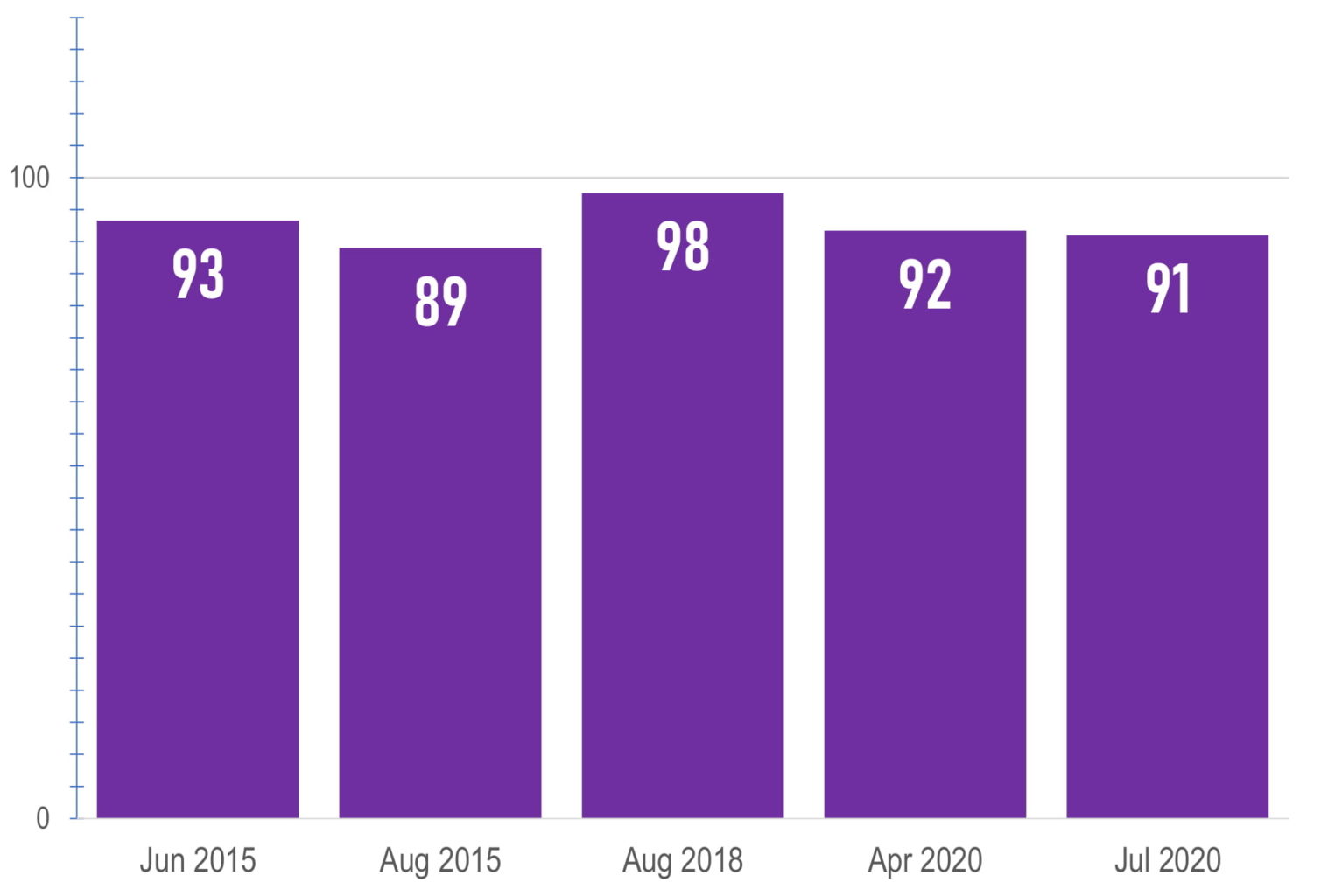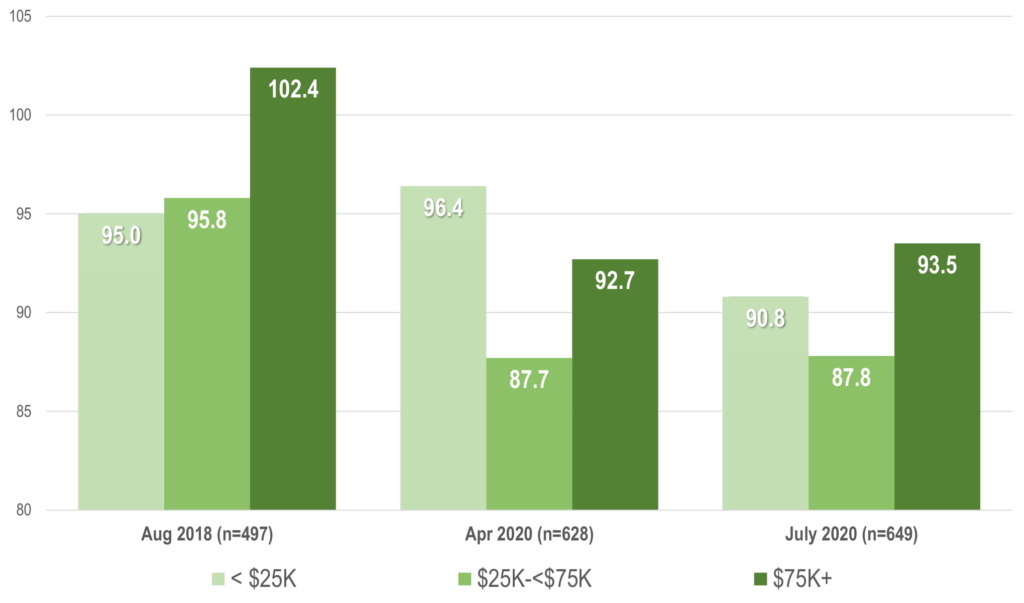Collaborating with BBS & Associates, Campbell Rinker released the latest edition of its Donor Confidence Survey in July 2020. This study of 640 US donors shows that confidence remains stable since April, despite surging COVID-19 cases in several states and ongoing protests in large cities.
Campbell Rinker uses an index to measure donor confidence. Please see the Methodology section at the end of the story for a quick explanation of how we do this and what it means.
Donor Confidence Index at 91.3 in July
The Donor Confidence Index for July 2020 stands at 91.0, slipping 0.7 points from 91.7 measured in April. In context, the Index for August 2018 stood at 97.6.

The data suggest that donors are slightly more reluctant to keep giving than they were in April 2020. (Recall, that was just two months into the pandemic). And, while they still hope for a quick economic recovery, these hopes are now a bit lower than in April 2020.
Despite this decline, donors expect the economy to recover much faster than they did nearly two years ago, in August 2018. Concerns then were driven by media-driven uncertainty about the Trump administration.
Read what the Wall Street Journal has to say about giving in the COVID-19 era here, in an article highlighting the findings of our July and April donor confidence studies.
Faith Habits Affect Confidence

Confidence is much stronger when donors are even moderately active in their faith. In our study, we measure this by whether or not donors attend religious services. At 96.2, the Index for donors who attend services has barely changed since 2018. And, at 93.4, the Index for donors who even occasionally attend church is several points higher than the overall.
In contrast, donors who do not attend services at all have seen their confidence badly shaken by the pandemic. While it was a respectable 99.3 in August 2018, their Index fell to 87.4 in April and now stands at 86.1. In comparison, Campbell Rinker has not seen levels like this in the overall Index since country was in a full-blown recession in 2009.
While a correlation exists between age and attending religious services, this linkage does not explain the lower confidence here. Instead, we see that they simply less hopeful: they are far less likely to see the economy recovering quickly. And they are twice as likely to be dissatisfied with the direction of the country and with federal politics. All of this adds up to confidence levels that are roughly 13 points lower than they were at the end of 2018.

Confidence by Generation stays Stable
Donors across generations have seen their level of giving confidence decline since 2008, from Baby Boomers to Millennials and those in Gen-Z. In contrast, Gen-X donors expressed lower confidence in 2018 and remain slightly less confident even now in July 2020.
Overall, however, Campbell Rinker measures very similar confidence levels in each of these generational groups from April 2020 to July 2020. The biggest drop of 1.5 index points occurs among Millennials, who are more apt to see the economy staying the same or declining than they are to expect improvement.

Variance by Income Levels
Donor households earning less than $25,000 annually posted an Index score of 90.8. This was a significant decline of nearly six index points since April. This drop is attributable to these households having to be much more frugal during the pandemic, cutting back on giving and spending what they have only on essentials.
Mid-level income households earning between $25,000 and $75,000 annually scored the worst, with an Index of 87.8. This was nearly a carbon copy of the score from April, reflecting a continued bias toward giving less and generally poor economic expectations.
In contrast, donors in households with higher income have higher confidence levels than those who earn less. Households earning in excess of $75,000 post an index of 93.5 compared to the overall 91.0. Confidence among donors earning at this level has actually increased a bit since April.
Methodology:
This poll of 649 US donors was sponsored by BBS and Associates and conducted online by Campbell Rinker from July 21-24, 2020. Responding donors had given at least $20 to any charitable organization in the past year. The sample was stratified by age and gender, and subsequently weighted to reflect the US population by age. Margin of error is ±3.8% at the 95% confidence level.
About the Index:
Campbell Rinker uses an index to measure donor confidence. An index is basically a way of defining ‘normal’ as a level of 100. In this way, we can compare other time periods or categories against the ‘normal’ rating for a simple ‘better or worse’ measurement. We established our baseline index level of 100 in February 2008, prior to the recession that emerged in August of that year.
Our Index takes into account several factors that we ask about in our standardized Donor Confidence poll. For instance, we ask about a donors’ willingness to keep giving at the same level, more, or less, and why. We also factor in their impression of the US economy, their expectations for economic improvement, and their comfort with direction of the country and its leadership. While we’ve added new response options over time (e.g. to see if the pandemic affects future willingness to give – an impact that somehow slipped our mind in 2008), the formula has not changed. This makes the Index a trustworthy gauge over time.
